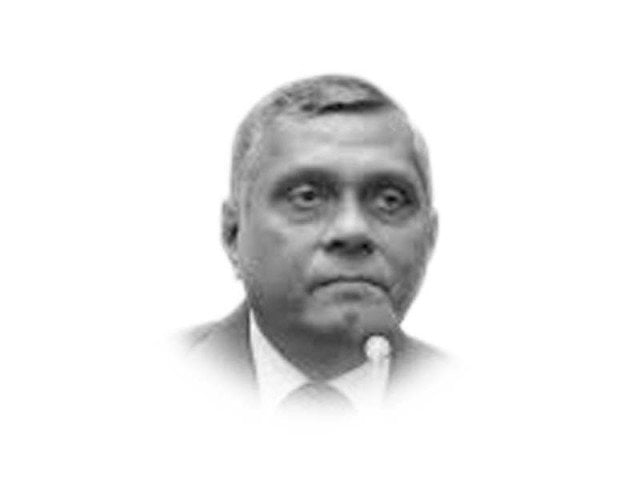
Celebrating the 75th anniversary of the North Atlantic Treaty Organization (Nato) on July 9 in Washington DC sends a clear message that the world with be further polarised and the conflict with Russia and China will deepen with the passage of time.
From 12 members in 1949 to 32 in 2024, the expansion and enlargement of Nato means the US and its key western allies want to revert back to Cold War politics. Invincibility of Nato to deal with security threats from Russia and China is however a myth and not a reality because the world is fast transforming from unipolar to multipolar.
Speaking on the occasion of Nato’s 75th anniversary, Secretary General Jens Stoltenberg said: “Nato is “not only the most successful and strongest, but also the longest-lasting Alliance in history. There are no cost-free options with an aggressive Russia as a neighbor; there are no risk-free options in a war. The time to stand for freedom and democracy is now; the place is Ukraine. The alliance will continue to face difficult questions in the future.”
Given the disintegration of the Warsaw Pact — the Communist alliance in Eastern Europe led by the then Soviet Union — in 1991, the survival and strengthening of Nato appears amazing. Nato not only survived and consolidated its position, it also expanded by including former members of the Warsaw Pact and the neighbours of Russia.
Moscow’s alarm and insecurity vis-à-vis an expansionist Nato with belligerent and aggressive policy of containing Russia prompted its attack over Ukraine in February 2022. Russian President Vladimir Putin made it clear that his country will not allow any hostile presence in its neighborhood. Even then, the US-led Nato sustained its efforts to contain Russia, and now in the Washington meeting the Atlantic alliance came up with a strategy of Indo-Pacific region in its sphere of influence with an aim to contain China. Henceforth, the ‘dual containment’ policy of Nato by including Russia in Europe and China in the Indo-Pacific region is a dangerous move. The inclusion of Finland and Sweden into Nato means that except Austria and Switzerland, no state in Europe is neutral and is now aligned with the US-led Atlantic alliance.
Can Nato stay invincible by reinforcing its policy of ‘dual containment’ and what are the options left for Asia-Pacific countries that are not aligned with any alliance reflecting the Cold War mindset of 1950 and 1960s? What will be the position of India in the emerging neo-Nato security framework engulfing the Indo-Pacific region? How is Indian Prime Minister Narendra Modi’s visit to Russia viewed by Ukraine and Nato? How does the Washington alliance look at Putin’s visit to North Korea and Vietnam and how receptive are the pro-American Pacific countries like Australia, Japan, New Zealand, Taiwan along with ASEAN member states to the idea of expanding Nato’s sphere of influence to South East Asia and the Pacific regions?
Coming back to the 75th anniversary of Nato celebrated in Washington DC the other day, The New York Times in its news analysis dated July 16, 2024 entitled ‘How Europe can defend itself’ argues, “Even the European members of Nato say that they must do more to defend themselves as the war in Ukraine continues. The possibility of former American President Donald J. Trump will return to the White House heightens the concerns, given his repeated threat to withdraw collective defense from countries that don’t pay their way in the alliance.” Trump was highly critical of some Nato members not paying their share for the defence of Europe but in 2014, Nato pledged to spend 2 per cent of GDP on the military. Therefore, according to The New York Times, “Although the Nato Secretary General, Jens Stoltenberg insists that 2 percent is a floor not a ceiling, a lot of planks are still missing, including Spain and Italy. The most important European countries like Britain, France and Germany have not firmly committed to spending at least 2 percent or more in the long term, while 2.5 percent or even 3 percent is what European defense system needs.” It is yet to be seen how the present day deployment of 100,000 American forces in Europe and enhancing spending for Nato will make the Atlantic alliance invincible.
When Russia unilaterally annexed Crimea, a legitimate part of Ukraine, in 2014 the perception within Nato that something should be done to contain Russian military moves gained strength. One way to contain Russia was to exclude it from the G8 club of most powerful countries of the world, which became G7. Encircling Russia in Europe by expanding the membership of Nato was another strategy by Nato to restrain the so-called Russian designs against Ukraine. But, Nato miscalculated Putin’s extra-territorial power ambitions when on February 22, 2022 Moscow attacked Ukraine and established its puppet government in the Russian speaking Eastern Ukraine. Certainly, the war in Ukraine reinforced Nato’s quest for invincibility by luring Sweden and Finland, the two neutral Nordic states to join Nato.
Realities on the ground prove that Nato’s quest for invincibility and its drive to contain both Russia and China will be counter-productive because of three main reasons.
First, the more the US-led Nato will try to encircle Russia and overstretch its mandate by containing China, the more it will become vulnerable to adverse reaction from those countries of Europe and the Indo-Pacific region that are not in favour of plunging in another cycle of Cold War. Certainly, the Chinese response to Nato’s ambition to contain Beijing will be non-military but will have a strategic component by defeating the West through its economic might. If China is the world’s second largest economy with foreign exchange reserves of 3 trillion dollars, the US is the world most debt-ridden country having a debt of 35 trillion dollars. Why should European members of Nato be in a vicious cycle of containing Russia and pushing them deeper and deeper into the war in Ukraine when such moves will have devastating economic ramifications?
Second, if in February 2022, the US was angry with the then Prime Minister of Pakistan, Imran Khan, over his visit to Moscow at a time when Russia attacked Ukraine, Washington and Kiev in a lighter tone expressed their chagrin over Narendra Modi’s visit to Russia. But, certainly, India is the world’s fifth largest economy and will not succumb to American pressure. Modi may have an ostensible tilt towards America but with a reduced majority in 2024 general elections he wants more space in the foreign policy arena.
Finally, on the issue of Nato’s invincibility and its dual containment policy, much depends on the outcome of the November 2024 US presidential elections. The return of Donald Trump to White House would be a boon for Russia and a setback for Ukraine and Nato.





1725784957-0/Tribune-Pic-(17)1725784957-0-165x106.webp)







COMMENTS (1)
Comments are moderated and generally will be posted if they are on-topic and not abusive.
For more information, please see our Comments FAQ